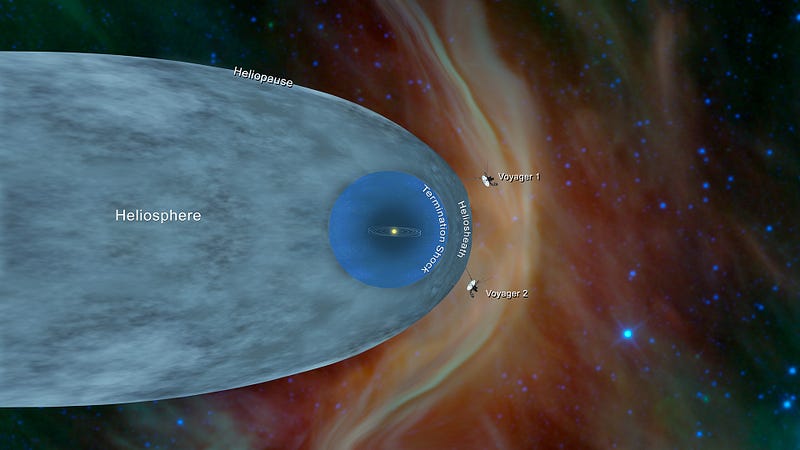# New Discoveries from Voyager Probes: Electron Physics in Space
Written on
Chapter 1: The Legacy of the Voyager Missions
NASA's Voyager probes, launched over four decades ago, continue to make waves in the scientific community, demonstrating the foresight behind their missions. Currently, both Voyager 1 and 2 reside beyond the solar system, exploring the vastness of the interstellar medium (ISM). Recent findings from the University of Iowa reveal that these probes have identified a completely new type of “electron burst” associated with coronal mass ejections (CMEs) from the sun.
The Voyager spacecraft, launched just weeks apart in 1977, capitalized on a rare planetary alignment that happens only once every 175 years. Voyager 1 took a direct path past Jupiter and Saturn, while Voyager 2 made a more extended journey, visiting Jupiter, Saturn, Uranus, and Neptune. The gravitational pull from these massive planets provided the probes with a boost, propelling them out of the solar system. In 2012, Voyager 1 crossed the "heliopause," the boundary where the solar wind fades and the ISM begins. Voyager 2 followed suit in 2018 after a longer route.
Upon entering the ISM, the Voyager probes gained a unique perspective of the solar influence, something no other spacecraft has achieved. NASA had wisely equipped these exploratory machines with the necessary instruments to study the ISM. The cosmic ray detectors aboard have been pivotal in monitoring the effects of CMEs as they travel through space and eventually reach the heliopause. This journey takes approximately one year, with some particularly potent CMEs breaching the heliosphere and entering the ISM, where unexpected phenomena have been observed by Voyager 1 and 2.

Section 1.1: Observations of Electron Bursts
Each time a significant CME arrives at the ISM, researchers observe an electron burst beforehand, with the actual shockwave arriving 13 to 30 days later. This phenomenon is surprising, as one would expect the shockwave to precede any detectable signals. The research team attributes this unique timing to the characteristics of magnetic field lines in the ionized ISM, which appear to be nearly straight. As large CMEs penetrate the heliopause and interact with these magnetic field lines, some electrons are accelerated along these pathways, achieving speeds nearly 670 times greater than that of the shockwave that initially sent them out from the solar system. This is the reason Voyager 1 and 2 detect the electron bursts before the arrival of the CME shockwave.
Subsection 1.1.1: A New Mechanism Uncovered
Scientists have never before witnessed electrons being accelerated ahead of a shockwave in this manner. This discovery introduces an entirely new mechanism, providing insights that could greatly enhance our understanding of the ISM. Without the contributions of these two decades-old space probes, such a revelation may have remained undiscovered.
Chapter 2: Insights from Voyager's Journey
In the video titled "JUST IN: Voyager Spacecraft Gets Sudden Power-up in Deep Space," viewers can delve into the recent findings and the implications of the Voyager probes' discoveries in the deep reaches of space.
Another fascinating video, "Neil deGrasse Tyson: 'Voyager 1 Has Just Detected 300 Massive Objects In Space,'" discusses the significance of the Voyager probes' findings, highlighting their contributions to our understanding of cosmic phenomena.
Now read: Voyager 2 Probe Talks to Upgraded NASA Network After 8 Months of Silence. NASA Confirms Voyager 2 Has Left the Solar System. NASA Working to Fix Voyager 2 From 11.5 Billion Miles Away.